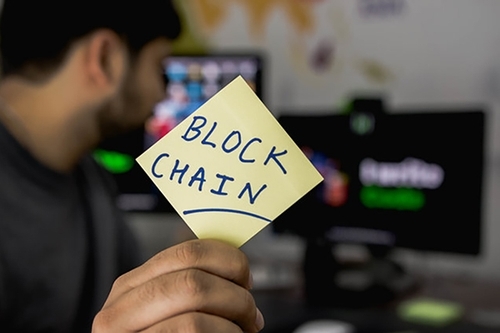What is Blockchain?

What is blockchain technology?
In simple terms, a blockchain is a public database. The ‘block’ refers to a chunk of information, the ‘chain’ refers to the way in which they connect - the database itself. Obviously there’s more to it than that, but at its most basic level, the idea of a blockchain needn’t be mystifying.
Essentially, transactions are recorded in the blocks and added to the chain, so it grows as transactions are made and verified. The verification is important, and we’ll return to that in a sec.
A blockchain is also frequently defined as a decentralised public ledger. All transactions ‘noted’ in the ledger are verifiable and - for all intents and purposes - permanent. The resultant system is intended to be transparent and fair.
It’s worth noting that, when we talk about transparency, we don’t mean that all details of every transaction are accessible to everyone on the network. For security, cryptocurrency transactions tend to have a high degree of anonymity. For example, when blocks are added to the blockchain used by Zcash (a privacy-protecting, digital currency), the sender, recipient and payment amount are omitted. What’s transparent is that the transaction itself has taken place, not its specific details.
How did blockchain technology come about?
Blockchain technology is the system that Bitcoin (an innovative payment network and a new kind of money) is based on, which was unleashed by Satoshi Nakamoto in 2009. It was a reaction to the previous year’s global financial crisis, and its intention was to create a peer-to-peer system of money with no central authority.
In doing so, it solved the problem of double-spending endemic in financial systems. You can read more about this in our guide to cryptocurrency- but in essence, the problem is: How do you stop digital money being spent two or more times, either fraudulently or in error?
It turns out this is solved not by having one central authority, but a peer network which sets about validating transactions.
It works like this. Let’s say Coincover wants to give you some money. We create a file saying we’d like to pay you, and sign it digitally with a private key (which shows it’s us making the payment). This transaction is then broadcast to the network, and becomes available to all peers. Once the transaction is confirmed, it gets added to the blockchain.
As all transactions are unique, public and verifiable, the problem of being able to spend money twice is sidestepped.
Of course, it’s not quite as simple as peers ticking a box to say the transaction’s approved. That would be too open to abuse. Transactions can only be confirmed by ‘miners’, which solve cryptographic puzzles in competition with other miners.
In theory, any peer can do this, and provide the network with their computer’s processing power. They’re incentivised to do so by being rewarded with tokens (in the first blockchain network, in Bitcoin) if they’re first to solve the puzzle, confirm the transaction, and add it to the blockchain.
What’s the benefit of a decentralised system?
Having a decentralised, transparent system has obvious benefits in terms of accountability. In not having one central authority, control is handed back to individual users. The resulting network is incredibly secure, and has checks and balances in the form of established consensus protocols. Basically, enough devices scattered across the world have to agree that a piece of information is true before it’s committed to the blockchain.
And, to be frank, systems that rely on humans as the sole central authority are open to poor decision making at best, and outright abuse at worst. The financial crisis of 2008 was triggered by excessive risk taking by banks, with knock-on effects for economies around the globe. Over a decade later, and faith in traditional banks has been severely eroded.
Another benefit is that - given there’s no central point of storage - data on a blockchain is unlikely to ever be lost or destroyed. As the data is stored on multiple devices worldwide, it’s virtually impossible to hack. The longest-serving platform - the Bitcoin blockchain - has never been hacked, despite a deluge of attempts. High-profile hacks concerning Bitcoin tend to be thefts from exchanges, not a compromise of the blockchain itself.
Using blockchain technology is useful for all sorts of industries, and its applications go beyond simply payments. By keeping a public ledger, it can ensure that creators of work are fairly paid, and get recognition for what they’ve produced. For instance, evidence recorded on the blockchain could prove invaluable for disputes concerning copyright.
Although primarily used for cryptocurrency, the potential applications for blockchain as an ultra-secure means of recording and storing records are only really beginning to unfold.

